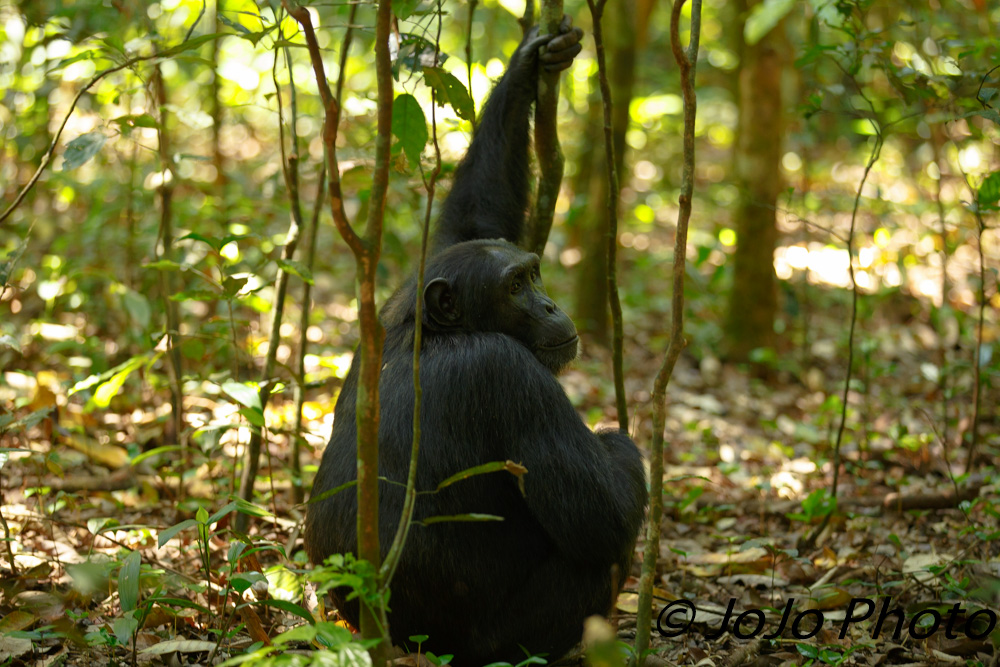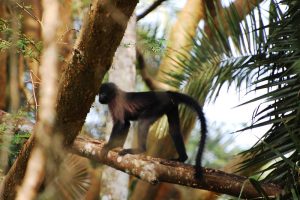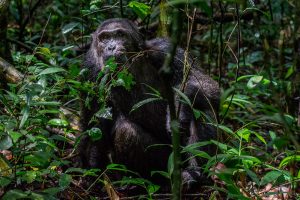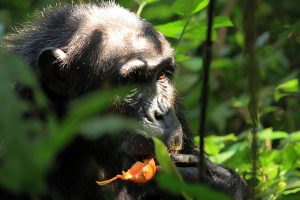Visit Kibale National Park
Kibale National Park, located in western Uganda, is approximately 348 kilometers from Kampala and just 26 kilometers from Fort Portal. Nestled near the serene Ndali Kasenda Crater area, the park is a half-day drive from other notable parks like Queen Elizabeth National Park, Rwenzori Mountains National Park, Semliki National Park, and Toro-Semliki Wildlife Reserve.
Spanning 795 square kilometers, Kibale National Park is renowned for its rich primate diversity. It borders Queen Elizabeth National Park to the south and stands out as one of Africa’s premier chimpanzee trekking destinations, hosting 13 primate species, including chimpanzees.
Bird enthusiasts will find Kibale particularly rewarding, with around 335 bird species to observe. These include forest, grassland, and swamp species visible along trails at Kanyanchu and Sebitoli tourism sites, and in the community-run Bigodi Wetland Sanctuary adjacent to Kanyanchu.
This article explores the park’s attractions, activities, best visiting times, accommodation options, and transportation methods.
Attractions in Kibale National Park
Wildlife
Kibale National Park boasts an impressive 13 primate species, the highest number in Africa. Among its notable residents are over 1,450 chimpanzees, making it an ideal spot for chimpanzee tracking. Visitors may also encounter L’Hoest’s monkeys, red colobus monkeys, black and white colobus monkeys, red-tailed monkeys, blue monkeys, olive baboons, grey-cheeked mangabeys, bush babies, and potto.
You can feel free to explore and Visit Kibale National Park with Abunda Discoveries Uganda to enjoy the best Wildlife experience in Uganda
In addition to primates, the park hosts buffaloes, bush pigs, elephants, and duikers, though sightings of these animals are rare. The park also features various amphibians, reptiles, and colorful butterflies.
Vegetation
Kibale’s diverse vegetation includes moist evergreen and semi-deciduous forests, woodlands, and savannahs. Evergreen and deciduous trees create a semi-closed canopy, with shade-tolerant herbs, ferns, shrubs, and broad-leaved forest grasses underneath. The park supports a remarkable 351 tree species.
Birds
The park is home to approximately 325 bird species, including six that are endemic to the Albertine Rift, such as the black-capped apalis and blue-headed sunbird. Other notable species include the African pitta, crowned eagle, and yellow-spotted nicator. The Bigodi Nature Walk is particularly renowned for birdwatching, with around 138 species found in the swamp alone.
Bigodi Wetland Sanctuary
Located 6 kilometers south of Kanyanchu, the Bigodi Wetland Sanctuary is a prime spot for birdwatching, with 200 bird species, including the great blue turaco and papyrus gonolek. The sanctuary also features mammals and primates, such as sitatunga antelopes, bushbucks, and occasionally chimpanzees.
Butterflies
Kibale National Park is also home to about 250 butterfly species from families like Papilionidae, Lycaenidae, and Pieridae. Notable species include Zenonia zeno and Papilio rex.
Mpanga Falls Trail
The Mpanga River cascades over Mount Karubaguma, creating impressive waterfalls about 50 meters high. Surrounded by steep gorges and lush forest, these falls can be visited on a day trip from Kibale National Park.
Sebitoli and Kihingami Wetlands
Sebitoli, situated in the northern part of Kibale, provides similar activities to Kanyanchu but does not include chimpanzee tracking. It is a birdwatcher’s paradise. Meanwhile, Kihingami, located 15 kilometers east of Fort Portal, is smaller but features 230 bird species, including the white-spotted flufftail.
Ndali-Kasenda Crater Lakes Region
The Ndali-Kasenda Crater Lakes region, located near Kibale and Queen Elizabeth National Parks, offers stunning views from the Ndali-Kasenda viewpoint. The area features several crater lakes, including Lake Nyabikere and Lake Kifuruka.
Culture
The culture surrounding Kibale National Park is influenced by the Batooro and Bakiga tribes. The Batooro are known for their traditional practices, such as naming newborns with pet names. Visitors can explore local customs through village walks and support community initiatives.
Activities
Chimpanzee Trekking: The well-habituated chimpanzee community around Kanyanchu provides excellent opportunities for spotting these primates. Guides offer insights into medicinal plants and animal tracks.
Hiking: The 12-kilometer Kibale Walking Trail explores diverse park habitats. It is best experienced during the dry seasons from June to September and mid-November to February.
Birding: With 325 bird species, including the black-capped apalis and blue-headed sunbird, Kibale is a birdwatcher’s haven. The Bigodi Nature Walk is especially renowned for birdwatching.
Crater Lakes Tour: Explore the more than 50 crater lakes in the Kasenda area near Fort Portal, appreciating the region’s unique landscape.
Cultural Tours: Engage with local communities to experience traditional lifestyles, local dances, and songs. Tours may also include visits to churches, schools, and traditional healers.
Guided Nature Walks: Popular activities include chimpanzee tracking and nature walks in the Bigodi Wetland Sanctuary. Mornings are ideal for chimpanzee sightings and birdwatching.
Night Walks: Spot nocturnal primates such as bush babies and potto during guided night walks from 19:30 to 22:00.
When to Visit
Kibale National Park welcomes visitors year-round. The best times to visit are during the dry seasons from June to September and December to February. The wet seasons (March to May and October to November) offer excellent birdwatching opportunities but may involve heavy rainfall and challenging navigation.
Where to Stay
Accommodation options range from luxury lodges to budget options. Notable choices include Primate Lodge Kibale (luxury), Kanyanchu River Camp, and Sebitoli Camping Ground.
How to Reach Kibale National Park
By Road: The drive from Kampala to Kibale National Park takes about 5 hours, covering approximately 309 kilometers via the Kampala-Mubende-Fort Portal or Kampala-Mbarara-Kamwenge routes.
By Air: Domestic flights are available from Entebbe International Airport and Kajjansi Airstrip to Kasese Airstrip.
Visit Kibale National Park and have a memorable experience in Uganda with Abunda Discoveries Uganda




